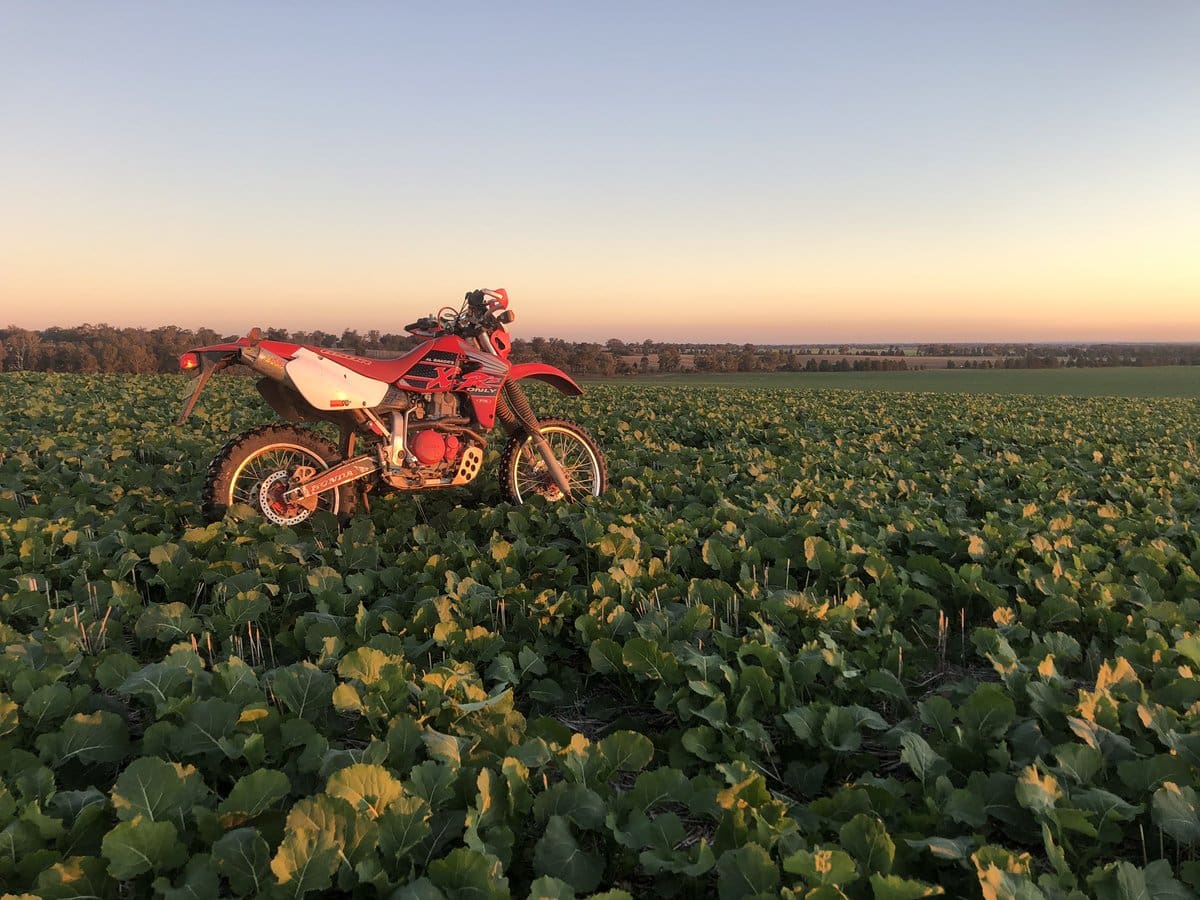
This ungrazed 44Y90 canola crop at Lockhart in southern NSW is among the state’s most advanced crops. Photo: John Stevenson
AUSTRALIA’S biggest canola crushers are weighing up the pricing of interstate seed to supplement existing east-coast stocks in order to keep their plants at full capacity as they count down to new-crop availability.
While eastern Australia is believed to have sufficient stocks on-farm and warehoused to cover the local crush requirement, prices bid by end-users may not be enough to draw them out of storage.
This means canola from South Australia and Western Australia, where crush requirements are minimal, may replace Victorian seed which has been, or is about to be, exported.
GrainCorp’s plant at Numurkah in Victoria has recently become Australia’s biggest crusher of canola following a 40 per cent expansion in its capacity.
The plant now requires 330,000t per annum of canola, putting it ahead of Cargill Australia’s plants at Kooragang in Newcastle and Footscray in Melbourne, which have crush capacities of 250,000t and 150,000t respectively.
Cargill Australia’s Newcastle plant is believed to have processed three cargoes of WA canola already to supplement the relatively small amount of canola produced in New South Wales last year.
The other major crusher is Riverina Oils & Bio Energy (ROBE) at Bomen near Wagga Wagga, which consumes 200,000t of canola annually, and MSM Milling at Manildra, which crushes around 100,000t.
MSM Milling general manager commercial Charlie Aldersey said the paltry crop harvested last year in central NSW had prompted the company to look well beyond its local area to source seed.
“In a good year, we try to get it from our back yard,” he said.
“We’re okay. We have a unique supply chain because we’re on the railway line, and we have access to canola from South Australia and Victoria if we need it.
“Our location comes into its own in a year like this one.”
Season concerns
While canola growing on the NSW slopes and plains south of the Lachlan River is largely in good stead following a timely planting, very little area has been planted in the northern half of NSW.
Corporate crushers are therefore watching with interest the weather over coming weeks to see if rain consolidates prospects for the crop now in the ground, and prompts growers and traders holding canola to sell stocks.
Crops in WA, SA and Victoria are all seen as having roughly average yield prospects, but many districts have limited subsoil moisture, and are relying on in-crop rain to achieve their potential.
Meal in demand
Following the closure of Cargill Australia’s Narrabri plant last year, meal and oil from around 200,000t of cottonseed is now not available locally in inland northern NSW.
This has increased demand from feedlots and dairies especially for canola meal, or imported alternatives.
It also means Australia has not had an export surplus of canola meal for around two years.
“It’ll be touch and go as to if there’s enough seed to get to the end of the year,” one trader said.
“There’s really strong demand for oil, and for meal for the drought-feed sector.”
Australia exports roughly half the canola oil it produces to Asia, and Chinese demand is seen as particularly strong at present.
In its most recent canola supply-and-demand report dated 31 May, Lachstock Consulting said 120,000t of open export business existed in WA, which was becoming increasingly unlikely to be shipped as the northern-hemisphere harvest gets closer.
“This is expected to be GM seed, and is pricing full carry to new crop.
“It’s interesting…that we haven’t seen China come in and take that remaining length.”
Trade sources report Victoria has shipped around 75,000t of canola, mostly as bulk to Europe, in the current cropping year, and China has bought some containerised canola.
Lachstock Consulting said NSW’s canola supply and demand had “nudged into deficit territory”, while Victoria was thought to be sitting on an export surplus of around 120,000t.
Lachstock said Victorian export pricing remained competitive, with bids to growers at $10/t less than those in WA, and SA a further $10/t behind.
“Given the local weather and tightness in Europe, it suggests that the markets are a little undervalued here.”
According to the latest figures from ABARES, Australia is forecast to produce 2.57 million tonnes of canola from 2.0 million hectares.
| NSW | Vic | SA | WA | |||||
|---|---|---|---|---|---|---|---|---|
| Hectares | Tonnes | Hectares | Tonnes | Hectares | Tonnes | Hectares | Tonnes | |
| 2019-20 | 400,000 | 520,000 | 400,000 | 550,000 | 210,000 | 290,000 | 990,000 | 1,208,000 |
| 2018-19 | 190,000 | 152,000 | 300,000 | 300,000 | 200,000 | 260,000 | 1,200,000 | 1,464,000 |
| 2017-18 | 860,000 | 893,000 | 542,000 | 938,000 | 237,000 | 335,000 | 1,531,000 | 1,724,000 |
| 5yr avg | 621,000 | 849,000 | 386,000 | 543,000 | 224,000 | 304,000 | 1,314,000 | 1,641,000 |
Table 1: ABARES June Crop Report canola area and tonnage estimates, including forecasts for 2019-20, and the five-year average to 2018-19.

HAVE YOUR SAY